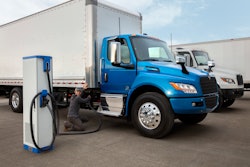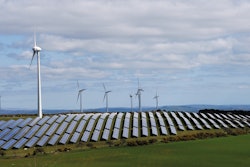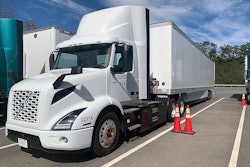I recently rented a car for a day of errands, drove it for 140 miles and returned it without stopping for gas even once. When I returned it, I was checked in by a polite gentleman who gave it the quick once over, looked at the mileage and told me the receipt was on its way. Not one word about the gas.
How did I do it? It was easy. I rented a battery electric car. I hadn’t planned on renting an electric car. In fact, I didn’t realize that was even an option. But when I checked for rentals, I found that electric was another choice just like any other car category. It was priced higher than the cheapest car I could have taken by $16 per day, or about the cost of four and half gallons of gas.
This was my first experience in a battery electric car, so I did do a little research before getting it. First, I wasn’t sure what kind of car I would get. Alamo, who I used, has a Nissan Leaf as the example car but of course I wasn’t promised a specific model or a minimum range. I then plotted out everywhere I needed to go and found that my route was about 140 miles. The Leaf has an EPA range of 149 miles so this could turn into a bit of a nail biter, but I clicked on it anyway and finalized my reservation.
Next, I checked with Alamo to make sure I didn’t need to charge it before returning the car. The customer service representative wrote back, “At this time, we do not require electric cars to be returned fully charged.” A quick check online revealed that the other major rental car companies have the same policy. I was all set.
When I picked up the rental, instead of being pointed to a row from which to choose my car, I was asked to wait while the agent went to look for an electric vehicle. He was back in less than a minute and walked me to some spots right by the door where three electric Hyundai Kona’s were parked, all next to each other. They must not rent too many electric cars yet at this location.
I was a little apprehensive when I got in the car since the Kona is not built on a dedicated electric vehicle platform and I was worried that it wouldn’t have the range I needed. To my surprise, the dash indicated an available range of 314 miles – more than double what I was expecting to use (the EPA range is 258 miles). Perfect! I buckled up, pushed start, selected D for drive and was on my way.
At first, I found it hard to be smooth in this car. The acceleration is much stronger than you would expect and as soon as I lifted my foot off the throttle, it would decelerate noticeably. But it didn’t take long to adjust my driving style. There is a little indicator showing how much regenerative braking is set when not on the throttle and I found a little paddle behind the steering wheel to select low, medium or high. On low, it will coast like any other car and on high you can mostly drive using just one pedal.
A few notes about the experience
• Figuring out one pedal driving was easy. After the first few miles, I had to use the brakes only three times above 10 MPH (regen will slow the car to a crawl but you have to use the brakes to come to a complete stop). It takes a bit of timing, but I was able to do it in and around Washington D.C. in morning rush hour traffic.
• Turning on the heat (it was below 40° F when I started my day) took about 50 miles off of the expected range. The seat heater reduced expected range by 8 miles.
• Even though I didn’t need it, I looked for charging wherever I went. My first stop, where I stayed about three hours, didn’t have it. My next stop, a large retailer known for their large blue stores where you have to walk through the whole place even if you only came for one thing, had two chargers from one of the better-known charging infrastructure companies. One was in use and the other wasn’t working. The display was completely off and it didn’t respond to my pushing any buttons. I left the car plugged in anyway since I wasn’t really taking a spot from anyone and I would only be there for a few minutes.
• My next stop was at a grocery store which offered charging. Once again, there were two spots and both were available. I pulled into one, found that charger was also not working so switched to the other one where I plugged in and went into the store. After spending about 30 minutes getting my items, I found the range increased by 4 miles. Not much, but equivalent to getting a pint of gas for free while shopping.
Over my time with the car, I averaged an indicated 5 miles per KWh. I didn’t think to reset the trip stats until about 10 miles after I had it, so that didn’t include the initial miles. The EPA range implies 4 miles per KWh but I don’t know if the average shown in the dash includes the drain from the heater or possibly any other accessories.
The best part was passing right by the airport gas station on my way to return the car. In this case, I was getting picked up and heading home but that would be especially useful if you’re like me and often in a hurry to catch a flight. It was well worth the extra $16, which I would have paid out at the gas station had I been driving a normal car.
My experience with an electric car confirms a few things we learned from Run on Less – Electric, including the great performance of EVs and how easy it is to learn and use one-pedal driving. But it also confirms that the infrastructure still needs work and running the heater has a noticeable effect on range. And just like with trucks, range could limit my flexibility had my needs changed.
As with the early adopting truck terminals, rental car locations also will have to consider how to handle charging, how to deal with the cost of it and how that affects their car availability and customers — not trivial questions. The transition is happening slowly right now, but given the advantages I look forward to my next chance to rent an EV again.












